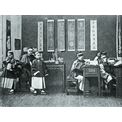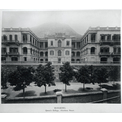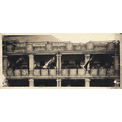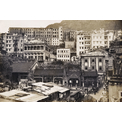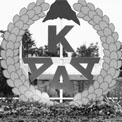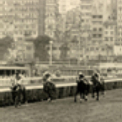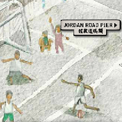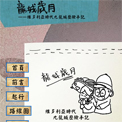 Collections
Collections Hong Kong, Benevolent City: Tung Wah and the Growth of Chinese Communities
Hong Kong, Benevolent City: Tung Wah and the Growth of Chinese Communities History of Tung Wah Services
History of Tung Wah Services Hong Kong Public Education and the Tung Wah Schools
Hong Kong Public Education and the Tung Wah Schools
1. Early education in Hong Kong
In Hong Kong’s early days, education was mostly provided by sishu (private schools), church and government schools. The curriculum of private schools usually began with The Three Character Classic and The Thousand Character Text. As students grew older, they would move on to the Four Books and the Five Classics in preparation for the Qing civil service examination. Places at private schools were limited, and since hiring tutors was an expensive proposition, only those Chinese who were able to afford tuition fees could attend private institutions for learning.
Church schools had naturally emerged since Hong Kong’s early years as a trading port. Examples of these include the Morrison Memorial School and the Anglo-Chinese College (present-day Ying Wa College) that had been moved to Hong Kong from abroad. There was also St. Paul's College that was founded by the priests of Sheng Kung Hui (Anglican). These schools preached the gospel and at the same time taught children to read and write. Church schools, however, remained unpopular until 1873 when the government provided subsidies that fostered a boom in their development.
Government schools were funded and managed by the colonial government. From 1847, the government was reluctant to allocate funds to religious organisations and instead subsidised 3 Chinese village schools on Hong Kong Island. In 1854, the government took over 5 subsidised Chinese village schools and turned them into government schools. In 1862, the government schools in City of Victoria were consolidated into the Government Central School for ease of management and English became a compulsory subject. The number of government schools increased gradually with government financial aid. By 1878, Hong Kong had 30 government schools.
2. Founding of the Tung Wah Free Schools
According to the Board of Education’s annual report of 1866, 80% of school-age children were deprived of schooling, largely due to a shortfall of places. Chinese people earned low incomes and could hardly afford tuition fees for their children. At that time, the government had no intention of providing universal education. As a result, many children in Hong Kong never had the opportunity to receive an education.
In 1879, Leung Wan Hon, the former Chairman of the Tung Wah Hospital, and then-Chairman, Chiu Shing Lam proposed the founding of free schools. With assistance from Lee Man Ching, Wong Shing, Fung Po Hei, Chan Yuk Lau and Wong Yu Yee, among others, the Man Mo Temple Free School was established in 1880. Supported by revenues of the Man Mo Temple and managed by the Tung Wah Hospital, the school followed the model of private schools and mainly taught The Three Character Classic, the Four Books and the Five Classics. The free school received strong support from the public and the general committee of the Man Mo Temple. By 1903, the number of Man Mo Temple Free Schools had increased to 8. Although the free schools offered a limited number of places, needy students who attended classes were given a chance to receive an education. These graduates could find jobs much more easily after graduation than those who did not receive an education. In 1908, the government enacted a law transferring all the assets of the Man Mo Temple to the Tung Wah Hospital. From that point onward, the free schools officially came under the management of the Tung Wah Hospital.
3. Tung Wah’s Pre-Second World War Education Services
During the late Qing period, mainland China underwent extensive education reform. The curriculum was divided into three levels: junior, intermediate and senior. Junior and intermediate levels were further divided into mengyang (develop the mind), junior primary and senior primary schools. Consequently, new schools emerged in Hong Kong dividing students into these different levels. Subjects such as English, mathematics, geography and physics were also added to the curriculum at this time.
In the face of emerging trends in education, the Tung Wah Hospital reformed its free schools and simultaneously expanded its education services. In 1904, Tung Wah Hospital bought new textbooks from Guangzhou and established a free school in Yau Ma Tei to provide education for Kowloon residents. In 1917, Tung Wah converted two of its free schools into senior primary schools. In 1919, the hospital received subsidies from the government for the construction of a school near the Man Mo Temple. This was the first school the hospital would build. By 1928, the number of Tung Wah free schools totalled 21 in number. In 1930, Tung Wah combined six of its free schools and founded the Man Mo Temple Central District Free Primary School. A variety of subjects were taught within its walls in four levels, fulfilling all the functions of a junior primary school. From 1920, Tung Wah began to establish evening schools (known then as “night schools”) for adults, and successively offered Primary 5 and 6 classes in its free primary schools. As the idea of gender equality became widespread in the 20th century, the Tung Wah Group of Hospitals (TWGHs) founded its first free school for girls in 1931. Although Tung Wah began with just two tutors, by 1935 its free schools employed 27 teachers and enrolled 1,260 co-educational pupils. By December 1941, all of Tung Wah’s free schools were forced to close due to the fall of Hong Kong to the Japanese.
4. Post-War Development of Tung Wah’s Education Services
In the aftermath of the Second World War, Hong Kong was in desperate need of reconstruction. In 1946, classes resumed at the TWGHs free schools. Meanwhile, Tung Wah removed the temple’s name from its schools to keep pace with changing times. The first free school thus reopened as Tung Wah Hospitals Hong Kong No.1 Free Primary School. The school was split into a.m. and p.m. sessions to accommodate more pupils. In 1948, all of its schools resumed classes and together admitted over 1,000 pupils. Since 1953, TWGHs converted all schools that were either poorly equipped or did not offer classes at all levels into modern primary schools. In 1955, Tung Wah Hospitals Kowloon No.1 Free Primary School was inaugurated. Equipped with 12 classrooms, a library and a music room, the school could accommodate 500 pupils. In 1959, Tung Wah operated 5 modern primary schools, all of them in line with Hong Kong’s education policy.
By the 1960s, the government had already started planning universal secondary education. It was at this point that the Tung Wah Group of Hospitals applied for permission to establish its own secondary schools. Its first secondary school, established in 1961, was named Tung Wah Hospitals No.1 College and was followed by more and more TWGHs schools in the years to come. The education services of the Tung Wah Group of Hospitals have undergone rapid developments since the end of the Second World War and are now a major offering of the TWGHs besides medical, health and charitable services.
